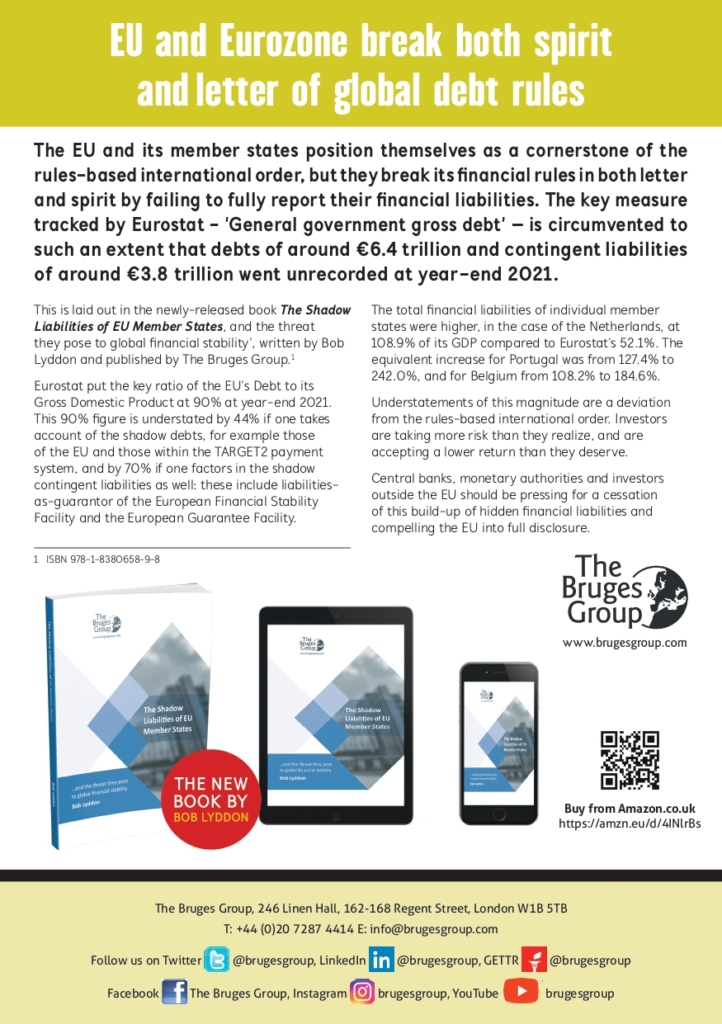Published on 14th April 2023
The EU and its member states position themselves as a cornerstone of the rules-based international order, but they break its financial rules in both letter and spirit by failing to fully report their financial liabilities. The key measure tracked by Eurostat – ‘General government gross debt’ – is circumvented to such an extent that, based on year-end 2021 figures, debts of around €6.4 trillion failed to be registered, and contingent liabilities of around €3.8 trillion.
This is laid out in the newly-released book ‘The shadow liabilities of EU Member States, and the threat they pose to global financial stability’, written by Bob Lyddon and published by The Bruges Group.[1]
Eurostat put the Debt-to-GDP Ratio of the EU as a whole at 90%, this being a key measure of the ability of the EU and its member states to meet their liabilities as they fall due. It is used by public credit rating agencies when they assign ratings to bonds issued by the respective entities. It is used by international investors when they decide how many bonds to buy and on what terms: the better the rating, the larger amount they buy, for longer maturities, and for a higher price (which translates into a lower debt service cost for the borrower).
In reality this 90% figure is understated by 44% if one takes account of the shadow debts, contracted for example through the EU or the European Central Bank’s payment system, and by 70% if one factors in the shadow contingent liabilities as well, which include liabilities-as-guarantor of the European Financial Stability Facility or the European Guarantee Facility.
The debts and total liabilities of individual member states rise, in the case of the Netherlands, from 52.1% of GDP to 83.6% (with the shadow debts added) and 108.9% (with contingent liabilities added as well). The equivalent figures for Portugal are 127.4%, 209.6% and 242.0%, and for Belgium 108.2%, 156.8% and 184.6%.
Understatements of this magnitude, and by a major bloc of market participants, cannot be passed off as a rounding error or a quirk of accounting practice. In addition to the euro currency being structurally weaker than it is made to appear,[2] it transpires that both Eurozone and non-Eurozone member states in the EU have higher liabilities than Eurostat reports.
This is an important deviation from the rules-based international order in the financial sphere. One result is that international investors are deprived of the yield they would enjoy if bonds were correctly rated, and they are induced to take more risk: by buying a higher quantity of bonds and for longer maturities.
Central banks, monetary authorities and investors outside the EU should be pressing for disclosure of detailed information on these debts and contingent liabilities, and an action plan to eliminate the discrepancies. They would be well advised at the same time to ensure that their own financial markets do not replicate the related practices.
[1] ISBN 978-1-8380658-9-8
[2] B Reynolds, D Blake and R Lyddon, Managing Euro Risk: Saving Investors from Systemic Risk (Politeia, 2020)

